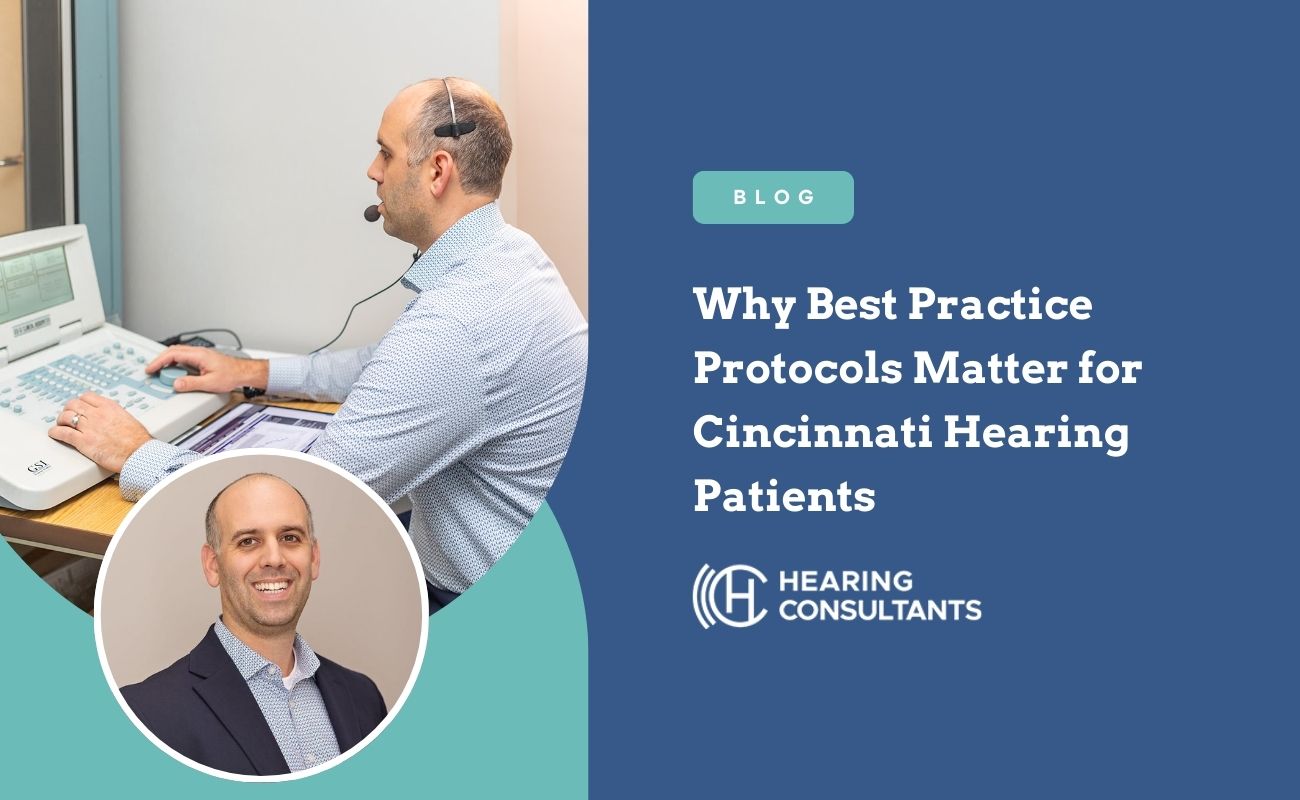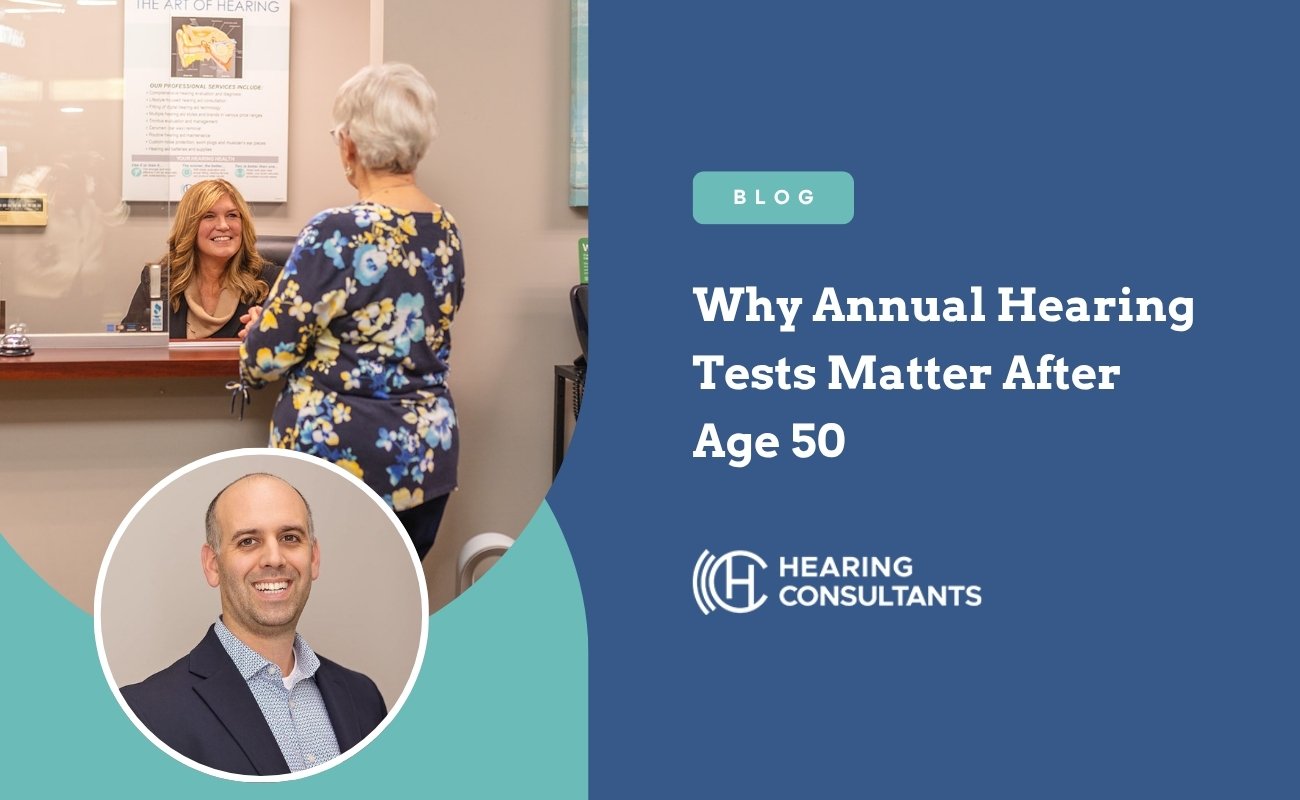What to Expect at Your Hearing Aid Fitting Appointment

Embarking on the journey towards better hearing begins with acknowledging the importance of your hearing health. At Hearing Consultants, we love providing comprehensive and trusted hearing care to our community in Cincinnati, OH, and we are thrilled you have found your way to us. As you move forward, knowing what to expect during your fitting can transform your transition to using hearing aids.
Whether you’re new to hearing aids or upgrading to a new pair, the hearing aid fitting appointment is critical to future success with your devices. During this appointment, our audiologist employs evidence-based best practices for an optimal listening experience. Real Ear Measurements are key to ensuring your hearing aids deliver the right level of sound amplification and compression. Our team, including audiologists recognized as leading hearing aid specialists, is committed to providing you with competent, compassionate care, utilizing advanced techniques like Real Ear Measurement to guarantee your comfort and satisfaction.
The Hearing Aid Fitting Process
The hearing aid fitting process consists of six main stages: Assessment, Treatment Planning, Selection, Verification, Orientation, and Validation. The initial assessment is crucial to determine the type and severity of hearing loss, which guides the subsequent stages in developing an effective rehabilitation plan with the hearing aids.
Initial Assessment and Hearing Aid Selection
To prepare for a hearing aid fitting, allocate a significant amount of time, preferably an entire morning or afternoon, to avoid feeling rushed. Come prepared with questions you may have about the usage and maintenance of the hearing aids. Be clear about your hearing needs and expectations from the device, and adjust your expectations realistically about what hearing aids can and cannot do.
Your hearing aid fitting begins with a comprehensive evaluation by our audiologists, who utilize evidence-based best practices. This assessment includes detailed hearing tests to determine the softest sounds you can hear at different pitches and to record the volume of sounds that are uncomfortably loud for you. Based on these results, our audiologists will discuss various hearing aid options that fit your lifestyle, budget, and aesthetic preferences, ensuring a personalized approach to your hearing care.
Real Ear Measurement and Device Customization
At a hearing aid fitting appointment, the audiologist will check that the custom-made earpiece fits comfortably in your ear. They will also ensure that the hearing aid, when connected to the earpiece, sits properly and discreetly behind your ear.
After these physical fit steps, the audiologist focuses on sound to ensure that hearing aids amplify softer sounds appropriately while keeping louder sounds at a comfortable level. They will perform a real ear measurement to accurately assess how the hearing aids perform in your ears. Real Ear Measurements (REM) are a critical part of the fitting process. This technique involves inserting a thin tube alongside the hearing aid in your ear canal to measure sound levels near your eardrum. It ensures that the hearing aids are programmed to amplify sounds to your specific needs without exceeding comfort levels. Our audiologists will adjust the hearing aids for different frequencies and sound volumes, making real-time adjustments to ensure optimal performance and comfort.
Training and Follow-Up Care
Once your hearing aids are precisely adjusted, you'll receive thorough training on how to use and maintain them. This includes instructions on inserting and removing the devices, changing batteries, and cleaning. We emphasize the importance of regular follow-up appointments, which allow us to make any necessary adjustments and ensure your hearing aids continue to perform well. Our team is dedicated to supporting you through the initial adjustment period and beyond, helping you to adapt to and enjoy the new sounds in your environment.
Programming Your Devices Using REM
Real Ear Measurement, described above, is a pivotal step in the hearing aid fitting process, ensuring that your devices are tailored precisely to your hearing needs. At Hearing Consultants, here is our process:
Step-by-Step Guide to REM Procedure
- Preparation and Setup: The audiologist ensures the testing room is acoustically suited for accurate measurements. Your audiogram is reviewed to tailor the REM process according to your specific hearing loss profile.
- Probe Tube Placement: A thin probe tube is placed alongside the hearing aid in your ear canal. This setup is crucial as it measures how sound is amplified by the hearing aid directly in your ear.
- Measurement Across Frequencies: The audiologist plays sounds at various frequencies through the hearing aid, measuring the output at each frequency to ensure the device matches your hearing prescription accurately.
Importance of REM in Hearing Aid Fitting
REM ensures that the hearing aids provide the correct amplification needed for your individual hearing loss, significantly enhancing the effectiveness of the devices. This method is endorsed by professional organizations such as the American Speech-Language-Hearing Association (ASHA) and the American Academy of Audiology (AAA) as a standard practice. By accurately measuring how sound is delivered in your unique ear canal, REM helps in adjusting the hearing aids to prevent discomfort and improve clarity.
Challenges and Solutions in REM
Despite its importance, REM is underutilized due to factors like the cost and time required for accurate testing. However, at Hearing Consultants in Cincinnati, our audiologists are committed to following best practices, including the efficient use of REM, to ensure high satisfaction and optimal hearing aid performance. Regular updates and recalibrations are advised whenever there are changes in your hearing or the acoustic properties of your ear canal to maintain the perfect hearing aid function.
Tips for Adjusting to Your New Hearing Aids
Getting Comfortable with Your Hearing Aids
- Understanding the Fit: Ensure your hearing aids are comfortable, whether they are custom-molded or behind-the-ear. Check that the microphones are correctly oriented and the vent size is appropriate to avoid discomfort.
- Learning the Basics: Familiarize yourself with identifying and handling your hearing aids—know which is left and right, how to turn them on and off, and how to insert them properly. Regular practice with these basics will make daily use second nature.
Acclimating to New Sounds
- Start in Quiet: Begin wearing your hearing aids in quiet environments to adjust to new sounds gently. This approach helps you become accustomed to the hearing aids' functionality without overwhelming your auditory system.
- Gradually Extend Usage: Increase how long you wear your hearing aids each day. Starting with a few hours and building up to a full day can help prevent auditory fatigue and make the adjustment period smoother.
- Anticipate New Sensations: Be prepared for initially unfamiliar sounds. The audio input from your hearing aids might sound strange at first—give yourself time to adapt as your brain processes these new auditory signals.
Embracing Technology and Patience
- Leverage Advanced Features: Modern hearing aids come with 'set-it-and-forget-it' capabilities, adjusting automatically to various listening environments. This technology simplifies usage by minimizing the need for manual adjustments.
- Focus on Progress: Recognize that while hearing aids improve hearing, they do not restore it to perfect condition. Concentrate on the improvements and be patient; adapting to hearing aids can take from six weeks to six months.
- Managing New Auditory Inputs: As you start using your hearing aids, your brain will encounter sounds it hasn't processed in a while. These will become more familiar over time as your brain learns to prioritize and manage this new information effectively.
Precise Hearing Aid Fittings in Cincinnati, OH
We hope we’ve elucidated the journey towards improved hearing quality. At Hearing Consultants in Cincinnati, OH, the care we provide is sophisticated and personalized. From the initial assessment and selection of hearing aids to the precision of Real Ear Measurements ensuring each device's perfect adaptation to the wearer's needs, the commitment to evidence-based best practices shines through. This dedication not only enables optimal device performance but also ensures that each individual’s transition to better hearing is smooth and supported at every step.
Embracing the new sounds of your environment with the help of state-of-the-art hearing aids adjusted through Real Ear Measurements can significantly enhance life quality. Our doctors of Audiology stand ready to guide you through this life-changing process, offering not just their expertise but a promise of ongoing support and care. For those ready to take the next step towards better hearing, we invite you to schedule a hearing test and hearing aid consultation with one of our audiologists today.
Get in touch with
Hearing Consultants
Contact our clinic to schedule an appointment today!







